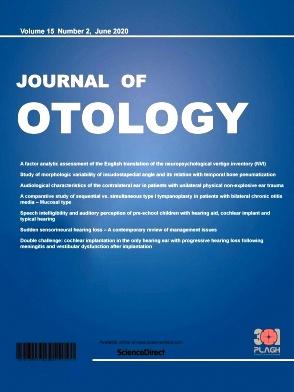人工耳蜗动物模型:分类与更新。
IF 1.4
Q2 OTORHINOLARYNGOLOGY
引用次数: 0
摘要
人工耳蜗是目前公认的治疗重度至重度感音神经性耳聋最有效的方法,也是最成功的神经人工耳蜗之一。自1961年成立以来,人工耳蜗植入已经扩大了其应用范围,包括年轻的新生儿,老年人和单侧听力损失的个体。此外,它还改进了手术方法,以尽量减少并发症的发生。此外,在电极设计、语音处理技术和编程软件方面也取得了显著的进步。然而,几乎所有人工耳蜗(CI)患者的耳蜗都存在炎症、纤维化甚至骨化。这些组织反应可能会对植入物的性能、残余听力和术后CI康复的结果产生负面影响。动物模型是重要的转化工具,为可能的治疗方法提供必要的临床前数据。因此,本研究以现有的用于人工耳蜗植入的动物模型为重点,突出研究进展,并对未来可能的研究领域提出见解。本文章由计算机程序翻译,如有差异,请以英文原文为准。
Animal models of cochlear implant: Classification and update
Cochlear implantation (CI) is currently recognized as the most effective treatment for severe to profound sensorineural deafness and is considered one of the most successful neural prostheses. Since its inception in 1961, cochlear implantation has expanded its range of applications to encompass younger newborns, older people, and individuals with unilateral hearing loss. In addition, it has improved its surgical methods to minimize the occurrence of complications. Furthermore, notable advancements have been made in the design of electrodes, techniques for speech processing, and software for programming. Nevertheless, inflammation, fibrosis, and even ossification are observed in the cochlea of nearly all cochlear implant (CI) patients. These tissue responses might have a negative impact on the performance of the implants, residual hearing, and the results of post-operative CI rehabilitation. Animal models are significant translational tools that offer essential preclinical data for possible therapeutics. Thus, this study concentrates on the existing animal models used for cochlear implantation, highlights the advancements made in research, and offers insights into potential future research areas.
求助全文
通过发布文献求助,成功后即可免费获取论文全文。
去求助
来源期刊

Journal of Otology
Medicine-Otorhinolaryngology
CiteScore
2.70
自引率
0.00%
发文量
461
审稿时长
18 days
期刊介绍:
Journal of Otology is an open access, peer-reviewed journal that publishes research findings from disciplines related to both clinical and basic science aspects of auditory and vestibular system and diseases of the ear. This journal welcomes submissions describing original experimental research that may improve our understanding of the mechanisms underlying problems of basic or clinical significance and treatment of patients with disorders of the auditory and vestibular systems. In addition to original papers the journal also offers invited review articles on current topics written by leading experts in the field. The journal is of primary importance for all scientists and practitioners interested in audiology, otology and neurotology, auditory neurosciences and related disciplines. Journal of Otology welcomes contributions from scholars in all countries and regions across the world.
 求助内容:
求助内容: 应助结果提醒方式:
应助结果提醒方式:


